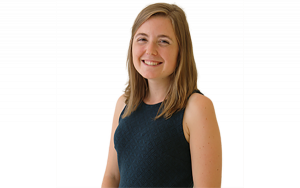At Seattle’s Experimental, Experiential Downtown School, Students Learn How to Learn With an Entire City as Their Laboratory
By Kate Stringer | March 18, 2019
Seattle, Washington
It was the first day of history class for freshmen at The Downtown School, but instead of sitting down and opening their textbooks, the students followed their teacher on a walk.
They traveled several blocks through downtown Seattle until they arrived at a rather unremarkable-looking piece of stone. Their teacher, George Heinrichs, didn’t say anything, just waited for the students to notice it. Pedestrians had flicked their cigarettes onto the 3-foot-tall pillar, and someone had marked it with white graffiti. There was no plaque to explain its existence, just a faintly etched quote on the slab that read, “A city built by conquerors is not dreaming.”
This may not look like much, but this pillar has a history, Heinrichs told the students. Figure out what it is; you can’t find it by searching online.
It was a lesson in learning how to learn, a common one for students at The Downtown School. The school emphasizes experiential learning — learning by doing. At The Downtown School, which is in its first year, the 45 freshmen and sophomores take frequent trips to immerse themselves in the museums, businesses, and art surrounding their campus. Guest speakers come in to demonstrate how classroom lessons apply to the real world. When the students become juniors and seniors, they will spend part of the day doing internships in the city.
Sue Belcher, head of The Downtown School, wants to create a different approach to preparing students for college by moving beyond two traditional paths: students taking as many classes as possible — which works for some but causes burnout for others — or becoming a standout in an artistic or athletic pursuit.
“My belief is forging a third path so that students, through internships and using the city as a lab, add to the global value of knowledge in a unique way,” Belcher said.
It’s a vision that comes from a source with both a heavy academic and extracurricular focus: The Lakeside School — a prestigious private school in Seattle — opened The Downtown School as a more affordable option, 9 miles south, just under the Space Needle. At Lakeside, students have a plethora of classes, sports, and extracurriculars to choose from, but it comes with a high price: Tuition is nearly $35,000. At The Downtown School, tuition is half that ($17,500), classes are limited, student enrollment is a fraction of the size, extracurriculars are few, and the school day is shorter so students can participate in sports or activities elsewhere.
Like the theme of learning how to learn, the school itself has a startup feel. The staff consists of Belcher and five teachers who also fill administrative positions. Teachers are more flexible with their lessons, collecting and acting on input from students who suggest everything from guest speakers in math class to changes in the direction of a club.
“Do all high schools have to have this full set of offerings, or could they focus on what they really do best?” asked Robin Lake, a Downtown School parent and director of the Center on Reinventing Public Education. “The Downtown School has shown that you don’t have to choose between really rigorous college prep and career development. You can do both.”
The stone block on the side of the road
The assignment to identify the random piece of concrete on the side of the road was one of the strangest freshman Eleanor had ever encountered. The ninth-grader had attended Catholic grade school, where lessons were more formal and left little room for experimentation or failure. Her family had considered sending her to a Catholic high school. But when Eleanor read about The Downtown School in the newspaper, something about its focus on cultivating student independence spoke to her.
She and her classmates got to work researching the stone. Because they couldn’t find an answer online, as their teacher had predicted, they had to brainstorm who in the city might know about the pillar. They were finally successful with the Seattle Arts Commission, which sent an email explaining the stone’s history.
It had been part of an art project started in 1978 called the First Avenue Laboratory that included the block, stone benches, and trees to serve as rest areas near bus stops. The artists had wanted to create something to remind residents of the community’s history, so the pillar and other parts of the project were recycled from old building materials from stone steps or sandstone bollards that used to exist in the neighborhood. The quote etched onto the pillar came from Anne Waldman, an American poet.
“It was really interesting because it was this little bit of history that we didn’t know where it came from,” Eleanor said. “We also got to really think critically in finding out how it got there.”
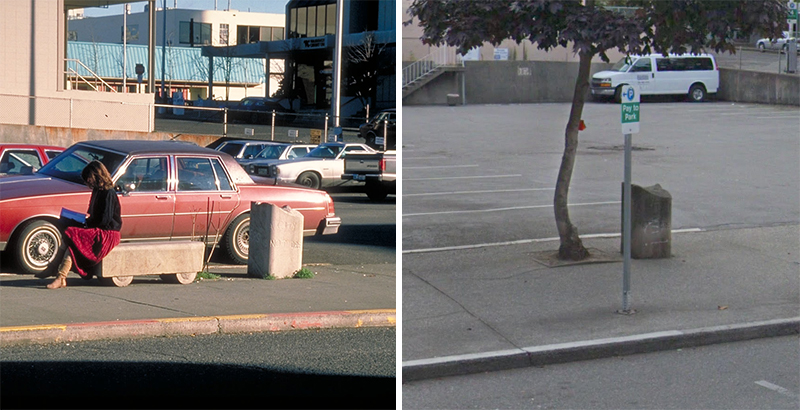
Experiential learning includes field trips, internships, projects, and classroom lessons applied to the real world. This type of education emphasizes cultivating student interests, learning through mistakes, and developing critical thinking to give students the tools to adapt to changing circumstances. In math class, for example, teacher Ananya Rabeya designed a curriculum for the freshmen that comprises eight themes: financial literacy, trades and travel, biomathematics (the relationship between biology and math), census, Eastern art, coding, food, and ethnomathematics (how different cultures approach math). These give the students a real-life lens through which they learn geometry, algebra, and statistics. Students and parents say it’s an engaging way to learn — but it can take more time and work than more conventional approaches do.
“My kids are learning a lot more, and they have to, just because you can’t teach application without teaching them more stuff,” Rabeya said. For example, a lesson about how viruses spread might involve multiple math concepts, which require more time to teach.
A few months ago, the students visited the Pacific Science Center to run a simulation of how the spread of measles depends on a community’s vaccination rate. One student’s grandparent, a virologist, visited the class to talk about how she worked with the federal Centers for Disease Control and Prevention to trace major epidemics over the past five decades.
For the unit on financial literacy, a parent who is a stock investor visited the class to discuss how he uses math on the job.
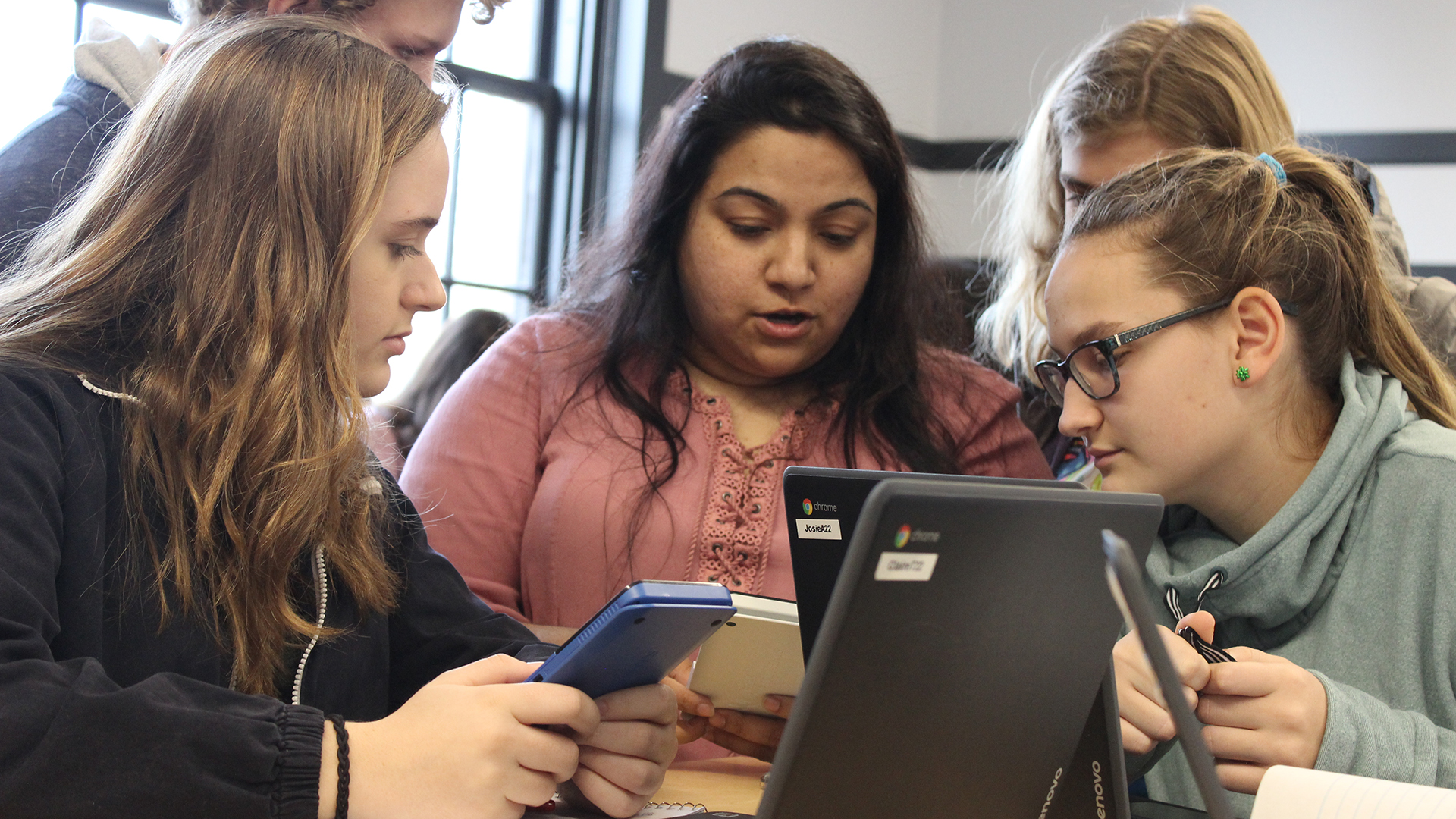
Rabeya meets with the academic team at Lakeside School once a month to make sure the two schools’ math content is aligned. She taught summer school at Lakeside beginning in 2009, then taught at community colleges before Belcher offered her a job. Rabeya jumped at the chance to help design the applied mathematics curriculum and was excited about The Downtown School’s goal of supporting 30 percent of students with scholarships. Currently, 7 percent of students receive financial aid.
Lake has noticed how experiential learning fuels teachers’ excitement for lessons, which can be infectious for students. She remembered when her son came home from school talking about his first math class: “He said, ‘Math blew my mind,’” Lake recalled. “He’s always been strong in math, but I’ve never heard him say anything like that.”
But experiential learning can prove challenging for students when the material isn’t presented in its traditional order. Lelach Rave, a parent and member of the advisory board, said her son — who has always loved math — was initially thrown off by this approach. But he and another student met with Rabeya to give feedback, and Rabeya made a few changes to help the students. For example, at the end of a unit like biomath, when students are reviewing a summary of concepts they learned — like using ratios to calculate mortality rates — Rabeya hyperlinked materials that provided more details to help them understand the content.
“I feel like the teachers are incredibly dedicated and are also really modeling the entrepreneurial type of energy that we’re encouraging in the students,” Rave said. “All the teachers are very actively and openly in growth mode themselves.”
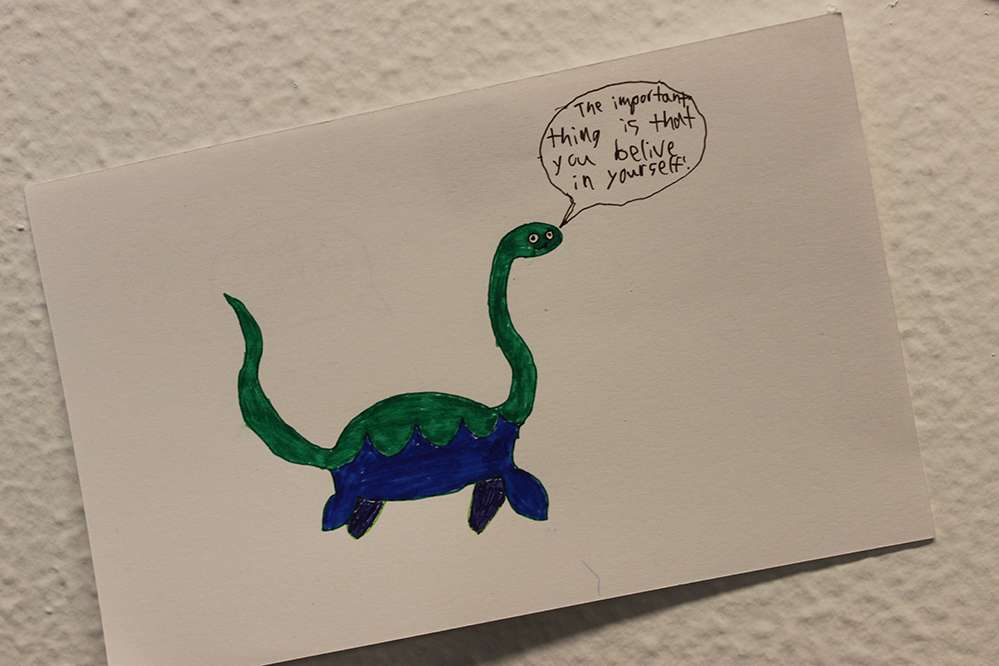
Some criticize experiential learning because it can be challenging to cover all the required academic content if lessons require too many excursions or projects. Others worry that this type of student-driven learning can lead kids to choose less rigorous topics in pursuit of an easy A.
To keep lessons and projects rigorous, English teacher Brian Crawford said he uses Bloom’s taxonomy (a hierarchy of education goals) and Gardner’s theory of multiple intelligences (different ways of understanding) to accommodate different learning styles and various ways of understanding a topic. After his English class read two graphic novels, American Born Chinese and Persepolis, students worked in groups to create seven projects that met both Bloom’s and Gardner’s measures. Crawford created a chart with multiple intelligences on the X axis and Bloom’s taxonomy on the Y axis, and students had to pick points where the two intersected. Their projects had to meet the requirements of both models. For example, a project that combined Bloom’s “create” with Gardner’s “musical intelligence” might be a rap song about a book.
Experiential learning has influenced Crawford’s teaching. Last year, he realized that the way he thinks about writing as a published author was different from the way he taught it to students. Now, he gives feedback on essays in a manner similar to the way he and his editor exchange feedback on his books — in a one-on-one conferencing style.
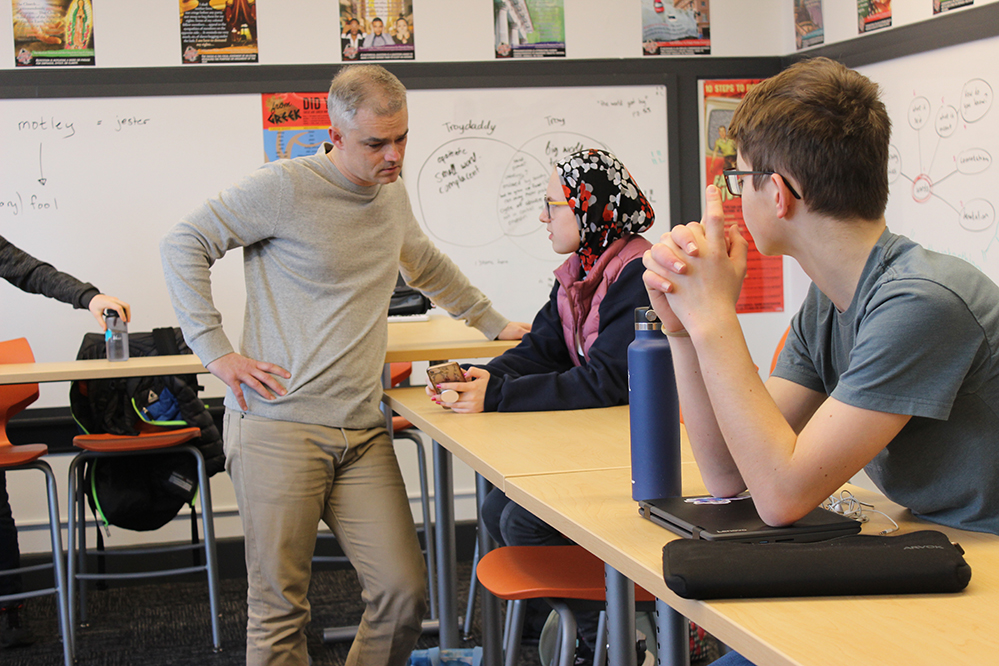
Students said they learn a lot from this approach. Eleanor recalled how the advice from Crawford has helped her reduce redundancies in her writing.
“Sometimes it can feel hard to get feedback … because it feels like what you did isn’t right,” she said. “But feedback helps me grow a lot as a writer.”
Eleanor’s mother, Ann Brockenbrough, remembered how challenging it was for Eleanor to first hear that feedback, but how having that experience helped her to improve.
“We can’t do things the way we’ve always done them [in education],” Brockenbrough said. “My goal isn’t to get my kid into Harvard. … My goal is to raise a kid who is able to adapt to the world.”
Learning how to learn, with a little help from butter
An important question: Is everything better with butter? Or perhaps more pressing: Is this question relevant to philosophy?
Students at The Downtown School were grappling with both these issues during a recent recording of their podcast, Everyday Philosophy. They hadn’t planned on doing podcasts — it was supposed to be a philosophy club. But by midyear, it morphed into a philosophy podcast club after Crawford, their English teacher and club adviser, realized that the students’ candid chatter would make for some good soundbites.
Neither Crawford nor the students had ever created a podcast. But in keeping with the school’s ethos of learning how to learn, expertise wasn’t a requirement; students just had to ask the right questions. How do we adjust sound quality? How do we make it interesting for listeners? Could there be a futuristic food that doesn’t taste good with butter?
The process required guess and check. Students tried arranging and rearranging the beanbag chairs on the floor so the recorder would pick up all their voices. Crawford gave the students questions to help guide their discussions. And when the conversation strayed from butter to a debate about the value of Rice-A-Roni, the students redirected it back to philosophy.
“The question really here is, if everything we’ve seen in life has been better with butter on it, can we then assume that everything in the future will be better with butter on it?” one student asked. “The problem is that we cannot know for a fact just because [of] observations that we’ve made in the past, what will happen in the future.”
Making a podcast had never crossed Crawford’s mind before the club began, but it has inspired him to start a Downtown School podcast next year that can be incorporated into English class, using what he and the students learned from their experiment this year.
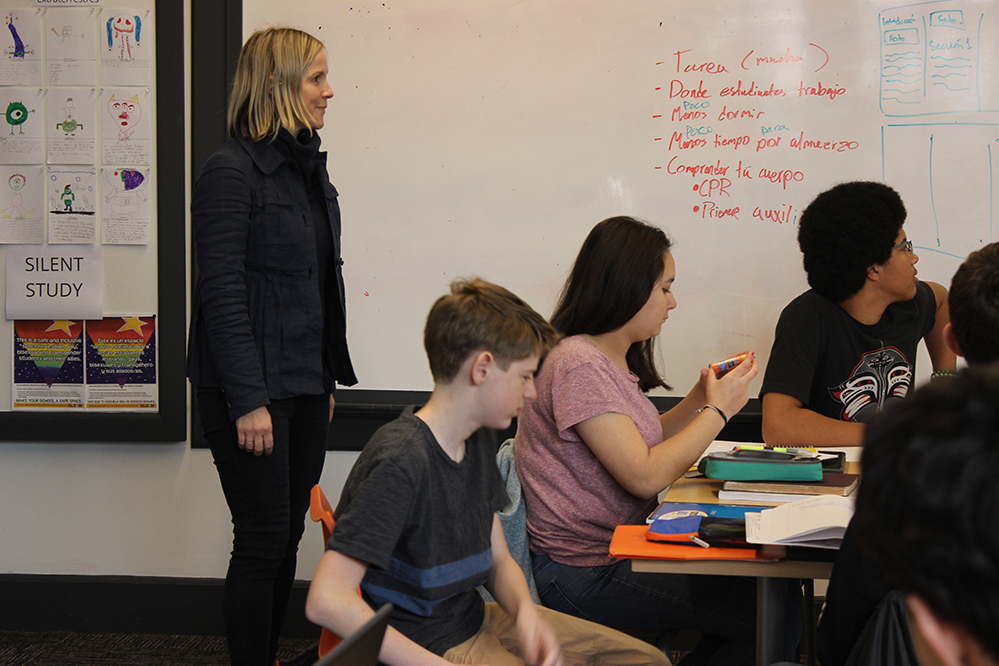
Whether the learning is experimental or experiential, students said, the school environment makes it a safe place to learn.
“The teachers are great,” said freshman Marit. “Everyone came here on a leap of faith.”
Freshman Sumeya initially worried that the school would offer too narrow a focus, but now she likes the small class sizes. “The passionate teachers make it a safe and comfortable environment,” Sumeya said.
Although The Downtown School doesn’t have some of the classic high school hallmarks, like prom, homecoming, or football games, it is building community in other ways. Students went ice skating together in December and hosted their own dance, complete with student DJs, in the fall. Some students said they missed the traditional environment, but others picked the school specifically to avoid these classic conventions.
Downtown students also have more time during the day to explore. At lunchtime, they use the Google Hangouts chat platform to let their teachers know where they’ll be spending their free hour. Some head one block east to the Pacific Science Center, while others work on homework downstairs. There’s also 45 minutes of community time every day, which they spend in student-led clubs or in schoolwide activities or lessons.
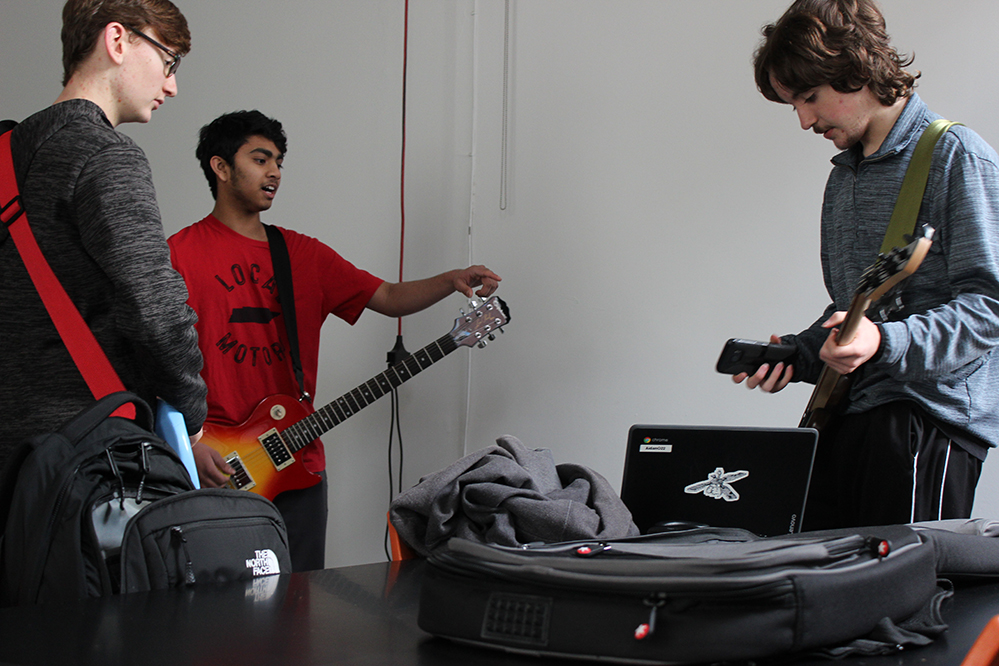
During one such community time in December, the students were deep in rehearsal for their play, Miss Beth. No, not Macbeth, Miss Beth, a tale of high school cheerleaders that loosely follows Shakespeare’s tragedy.
“Which is ironic, because we don’t have athletics and not a single student here does cheerleading,” Belcher explained, watching the rehearsal.
Maybe it was the anticipation of winter break or the difficulty of getting into character as cheerleaders, but the student director was struggling to get the group to focus.
“Every ounce of me wants to micromanage this process,” Belcher said, watching the group. Later, she added, “But I know that really the growth and learning is there by them actually managing the challenges on their own.”
Get stories like these delivered straight to your inbox. Sign up for The 74 Newsletter

